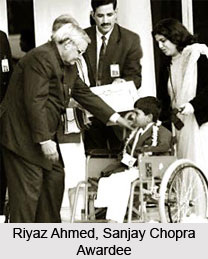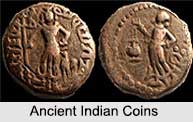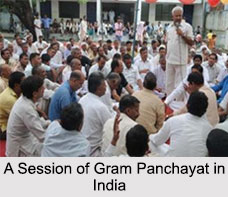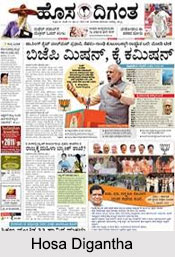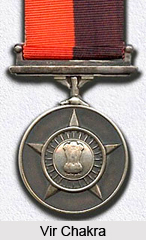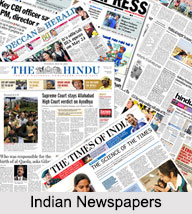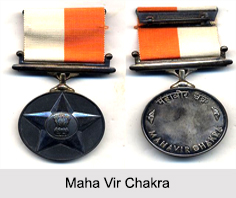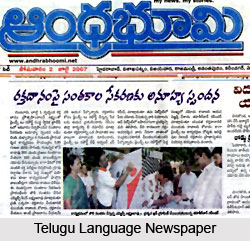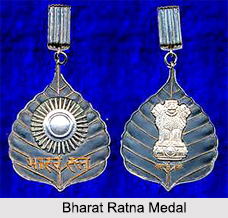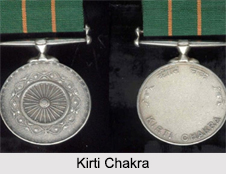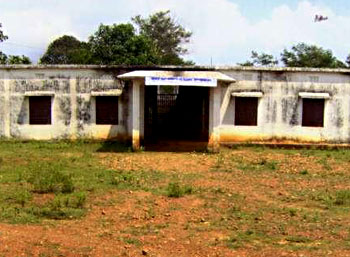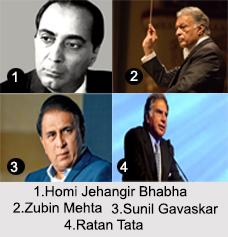Introduction
The Padma Awards, among India’s highest civilian honours, are announced annually on the eve of Republic Day. They are presented in three categories, namely- Padma Vibhushan for exceptional and distinguished service, Padma Bhushan for distinguished service of a higher order, and Padma Shri for distinguished service in any field. The recipients are selected based on recommendations from the Padma Awards Committee, which is constituted each year by the Prime Minister. Notably, the nomination process is open to the public, allowing even self-nominations.
Padma Bhushan Award is an Indian civilian award, which is given by
the President of India. It ranks second in the three-class
category of the prestigious Padma Awards. Padma Vibhushan Award is the
highest in this category and the other award is the Padma Shri Award. Padma
Bhushan Award ranks third among all the Indian civilian awards presented
in India, after the Bharat Ratna and Padma Vibhushan. It is
presented to recognize distinguished and exceptional services of the highest
order to the nation without any discrimination based on ace, occupation,
position or sex. Indian citizens and government
servants achieving great feats in any field can receive the award. The award
can also be given posthumously.
History of Padma Bhushan Award
On 2 January 1954, a press release from the Office of the Secretary to the President of India announced the institution of two civilian honours — the Bharat Ratna, the nation’s highest civilian award, and the three-tier Padma Vibhushan, categorized as Pahela Varg (Class I), Dusra Varg (Class II), and Tisra Varg (Class III), all ranking below the Bharat Ratna. Later, on 15 January 1955, the Padma Vibhushan was reorganized into three distinct awards- the Padma Vibhushan (highest), the Padma Bhushan, and the Padma Shri. In the first year of its inception, the award was presented to a total of 23 people.
The award, along with other civilian honours, was suspended twice in its history. The first suspension occurred in July 1977, following the swearing-in of Morarji Desai as India’s fourth Prime Minister. It was reinstated on 25 January 1980, after Indira Gandhi returned to power. The second suspension took place in 1992, when two Public Interest Litigations (PILs) were filed, one in the Kerala High Court and another in the Madhya Pradesh High Court. These litigations challenged the validity of the civilian awards as “titles,” in reference to Article 18 (1) of the Constitution of India.
On 25 August 1992, the Madhya Pradesh High Court issued an
order temporarily halting all civilian awards. A Special Division Bench of the
Supreme Court of India, comprising five judges, was subsequently constituted to
review the matter. On 15 December 1995, the Bench ruled that the Bharat Ratna
and Padma Awards do not constitute titles under Article 18, thereby restoring
the honours.
Design of Padma Bhushan Award
The original design of the award was a circular silver medal, with a diameter of 1-3/8 inches. There was a lotus flower inscribed in the center of the award. The term `Padma Bhushan` was written in the center of the medal and there was a floral wreath below. On the reverse side of the medal, there was a state emblem with `Desh Seva` or `National Service` written with a lotus wreath below. The recipients of the award used to wear the medal around their neck with a ribbon.
The design of Padma Bhushan Award was altered within a year on 8th of January, 1955. It is uncertain whether any specimen of this design was produced. The design was altered principally with a view to remove class structure. The award became a circular bronze badge, with a diameter of 1-3/16 inch and had geometrical patterns. There was a lotus flower inscribed in the middle of the badge, with three petals embossed in white gold. The term ‘Padma Bhushan’ was written in Hindi, above and below the lotus flower and the term was embossed in silver gilt. On 26th of January, 1957, Padma Bhushan Award was again designed. The badge was altered to polished bronze, with the embossing in white gold.
The badge of the Padma Bhushan Award is suspended from a
ring. The national emblem is inscribed on the reverse side of the badge, and
the motto is embossed below in white gold.
The winners of this award wear the badge with a ribbon that is 32 millimeter
long and medium pink in color. There is a 6-millimeter central white stripe in
the ribbon. The female recipients of the award wear the badge with a bow
fashioned from this ribbon.
Nominations of Padma Bhushan Award
Nominations for the Padma Bhushan are invited from a wide
range of sources, including state and union territory governments, ministries
of the Government of India, Bharat Ratna and Padma Vibhushan awardees,
Institutes of Excellence, Ministers, Chief Ministers, Governors, Members of
Parliament, and even private individuals. Recommendations received between 1
May and 15 September each year are reviewed by the Padma Awards Committee,
which is constituted by the Prime Minister of India. The Committee’s recommendations
are then forwarded to the Prime Minister and subsequently to the President of
India for final approval.
Regulations of Padma Bhushan Award
The Padma Bhushan is awarded for “distinguished service of a high order.” It recognizes contributions in any field, including service rendered by government officials, but generally excludes employees of public sector undertakings, except for doctors and scientists. The list of recipients is announced each year on 26 January, India’s Republic Day, and officially recorded in ‘The Gazette of India,’ a weekly publication of the Department of Publication, Ministry of Urban Development, that serves as the government’s formal record for official announcements. The award is not deemed official until it appears in the Gazette.
Any instance of revocation or restoration of the honour,
both of which require the President’s approval, is also published in the
Gazette, and recipients whose awards are revoked must return their medals upon
removal of their names from the register. The award does not amount to a title
and cannot be used as a suffix or prefix to the awardees’ name.
Fields of Activities/ Disciplines Recognized in Padma Bhushan Award
The Padma Bhushan award aims to honour individuals for their
exceptional and distinguished achievements or services across various fields of
activity and disciplines, including:
·
Art – encompassing music, painting, sculpture,
photography, cinema, theatre, and related fields.
·
Social Work – including social service,
charitable activities, and contributions to community development projects.
·
Public Affairs – covering areas such as law,
public life, and politics.
·
Science & Engineering – including space
engineering, nuclear science, information technology, and research and
development in science and allied subjects.
·
Trade & Industry – covering banking,
economic activities, management, tourism promotion, and business.
·
Medicine – recognizing achievements in medical
research and specialization in systems such as Ayurveda, Homeopathy, Siddha,
Allopathy, and Naturopathy.
·
Literature & Education – including
journalism, teaching, literary composition, poetry, promotion of education and
literacy, and educational reforms.
·
Civil Service – honouring distinction and
excellence in administration by government servants.
·
Sports – including achievements in popular
sports, athletics, adventure, mountaineering, promotion of sports, and yoga.
·
Others – for contributions not covered above,
such as the promotion of Indian culture, protection of human rights, and
wildlife conservation.
Selection of Padma Bhushan Awardees
All nominations for the Padma Bhushan are reviewed by the Padma Awards Committee, which is constituted annually by the Prime Minister of India. The Committee is chaired by the Cabinet Secretary and includes the Home Secretary, the Secretary to the President, and four to six eminent people as members. Its recommendations are forwarded to the Prime Minister and subsequently to the President of India for approval.
While there are no fixed criteria or rigid selection formulae, the Committee primarily considers an individual’s lifetime achievements and the element of public service reflected in their work. The award recognizes special service of a distinguished nature, rather than mere long service or excellence confined to a specific field, it must represent “excellence plus.”
Before final approval, the credentials and background of
selected individuals are verified by government investigating agencies to
ensure their integrity and character are beyond reproach. The Padma Awards are
ultimately conferred based on the recommendations of the Padma Awards
Committee, duly approved by the Prime Minister and the President of India.
Padma Bhushan Awardees
Padma Bhushan Award celebrates outstanding performances by individuals in diverse fields. The award winners are known as Padma Bhushan Awardees. In the year 2009, 31 people received Padma Bhushan Award. As of 2017, 7 people have received Padma Bhushan Award. Some of the famous personalities who have received Padma Bhushan Award are A. R. Rahman, Sharmila Tagore, Kamal Haasan, Cho Ramaswamy, Mira Nair, Anita Desai, Mary Kom and Pullela Gopichand.
Here is a list of Padma Bhushan Awardees based on their field of excellence and year of recipience.
Padma Bhushan
Awardees in Civil Services
Padma Bhushan
Awardees in Literature & Education
Padma Bhushan
Awardees in Medicine
Padma Bhushan
Awardees in Public Affairs
Padma Bhushan
Awardee in Science & Engineering
Padma Bhushan
Awardee in Social Work
Padma Bhushan
Awardee in Sports
Padma Awardees
in Trade & Industry
Padma Bhushan
Awardees (1954-1959)
Padma Bhushan
Awardee (1960-1969)
Padma Bhushan
Awardees (1970-1979)
Padma Bhushan
Awardees (1980-1989)
Padma Bhushan
Awardee (1990-1999)
Padma Bhushan
Awardees (2000-2009)
Padma Bhushan
Awardees (2010-2019)
Padma Bhushan
Awardees (2020-2029)
Refusals of Padma Bhushan Award
Several recipients of the Padma Bhushan have either refused or returned the honour over the years, each citing personal, ethical, or political reasons. The first to do so was Bengali theatre activist Sisir Bhaduri in 1959, who declined the award, stating that state honours merely served to “create a sycophantic brigade” and expressing his unwillingness to promote the illusion that the government genuinely valued theatre as a part of national life. Sitar maestro Vilayat Khan similarly refused the award in 1968, asserting that the selection committees were not competent to judge his music.
In 1990, eminent journalist Nikhil Chakravarty rejected the honour, believing that journalists should remain independent and not be identified with the establishment. Historian Romila Thapar turned down the award twice, first in 1992 and again in 2005, explaining that she only accepts recognition from academic institutions or organizations connected to her professional field.
In 1999, K. Subrahmanyam, journalist and civil servant, refused the award on the grounds that bureaucrats and journalists should not accept government honours, as it could compromise their impartiality. RSS volunteer Dattopant Thengadi declined the honour in 2003, stating he would not accept it until K. B. Hedgewar and M. S. Golwalkar, key figures in the RSS, were conferred the Bharat Ratna. Civil servant S. R. Sankaran rejected the award in 2005 without providing a reason, while playback singer S. Janaki refused it in 2013, remarking that it had come too late in her five-and-a-half-decade-long career. In 2014, the family of former Chief Justice of India J. S. Verma declined to accept the posthumous honour, noting that he would not have approved of such recognition as he never sought awards, rewards, or favours.
Some recipients chose to return their awards as a form of protest. Kannada novelist K. Shivaram Karanth, honoured in 1968, returned his Padma Bhushan in 1975 to protest the Emergency declared in India. Renowned author Khushwant Singh, who received the award in 1974 for literature and education, returned it in 1984 following Operation Blue Star. Scientist Pushpa Mittra Bhargava, founder-director of the Centre for Cellular and Molecular Biology (CCMB) and recipient in 1986, returned his award in 2015 to protest the Dadri mob lynching and express concern over the “prevailing socio-political climate” in the country.
The 2010 conferment of the award to Indian-American businessman Sant Singh Chatwal in the field of Public Affairs sparked controversy due to questions surrounding his background. Most recently, in 2022, former West Bengal Chief Minister Buddhadeb Bhattacharya declined to accept the honour on the eve of India’s 73rd Republic Day.





